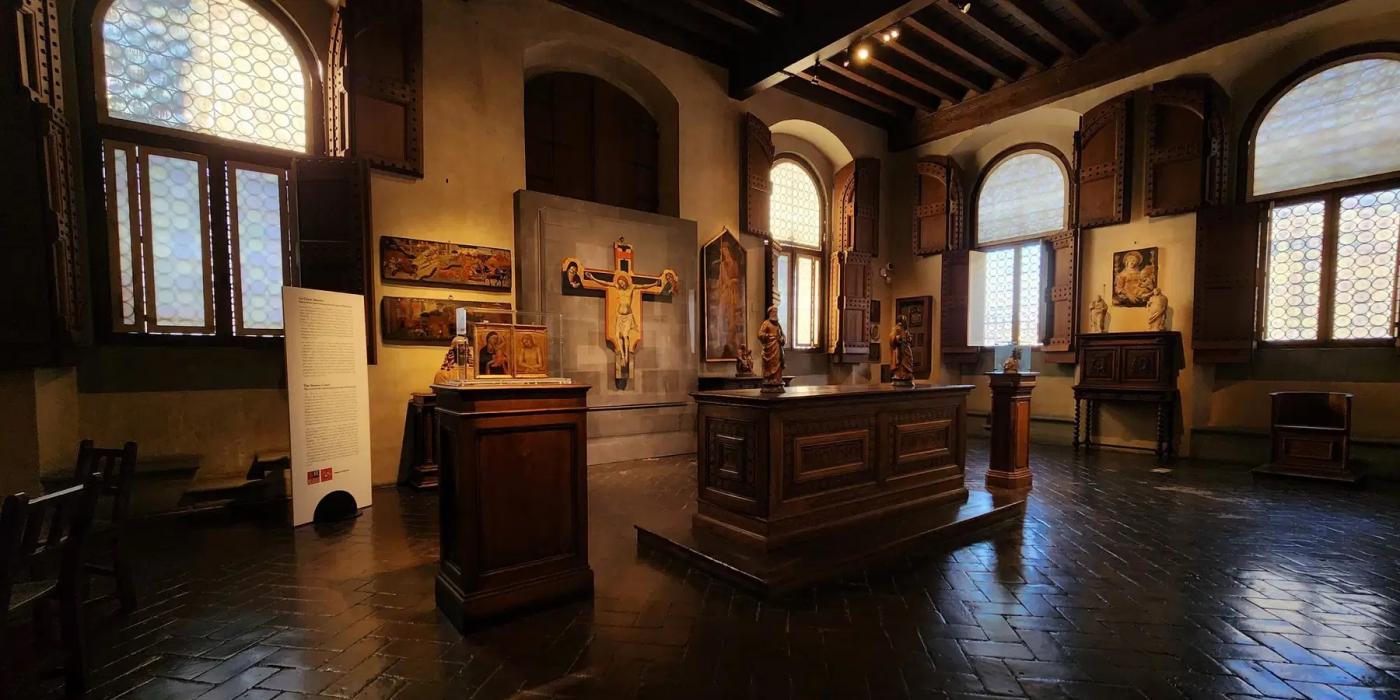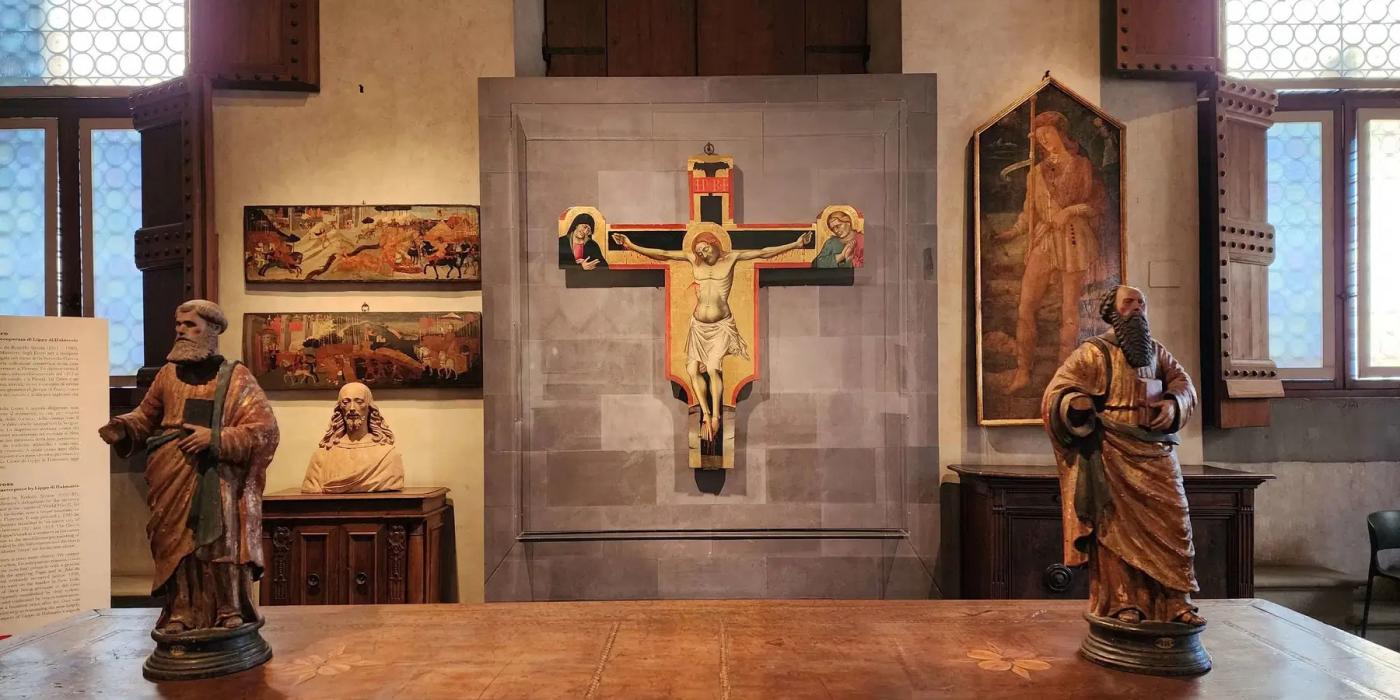The Siviero Cross. The story of a recovered work by Lippo di Dalmasio
The work, which takes its name from Rodolfo Siviero, has been restored and is on display in the second-floor hall of the Horne Museum, where it will remain until November 4th, 2025. The work, of great importance for 14th-century painting, has been reassembled with its side panels, which had been removed over a hundred years ago.
Siviero, head of the Ministry of Foreign Affairs Delegation for the recovery of artworks stolen during the Second World War, purchased it for his collection.
The cross was painted around 1395 by Lippo di Dalmasio, a Bolognese painter. The calm expression of pain, the anatomical details and the pictorial treatment confirm its attribution. Comparison with other works allows the Siviero Cross to be dated to the second half of the 1390s. The volumes of Christ's body, the jagged drapery of the loincloth and the interplay of light and shadow confirm a strong affinity with the Bolognese painting of the time. The two panels with the Virgin and Saint John have been recognized as belonging to the Sivero Cross by virtue of their iconographic and stylistic compatibility, their corresponding dimensions and the elbows of the two figures which match the traces of this anatomical detail that were still present on the cross.
Siviero, head of the Ministry of Foreign Affairs Delegation for the recovery of artworks stolen during the Second World War, purchased it for his collection.
The cross was painted around 1395 by Lippo di Dalmasio, a Bolognese painter. The calm expression of pain, the anatomical details and the pictorial treatment confirm its attribution. Comparison with other works allows the Siviero Cross to be dated to the second half of the 1390s. The volumes of Christ's body, the jagged drapery of the loincloth and the interplay of light and shadow confirm a strong affinity with the Bolognese painting of the time. The two panels with the Virgin and Saint John have been recognized as belonging to the Sivero Cross by virtue of their iconographic and stylistic compatibility, their corresponding dimensions and the elbows of the two figures which match the traces of this anatomical detail that were still present on the cross.
Access notes:
Last entry is 30 minutes before closing time.
Photo gallery


